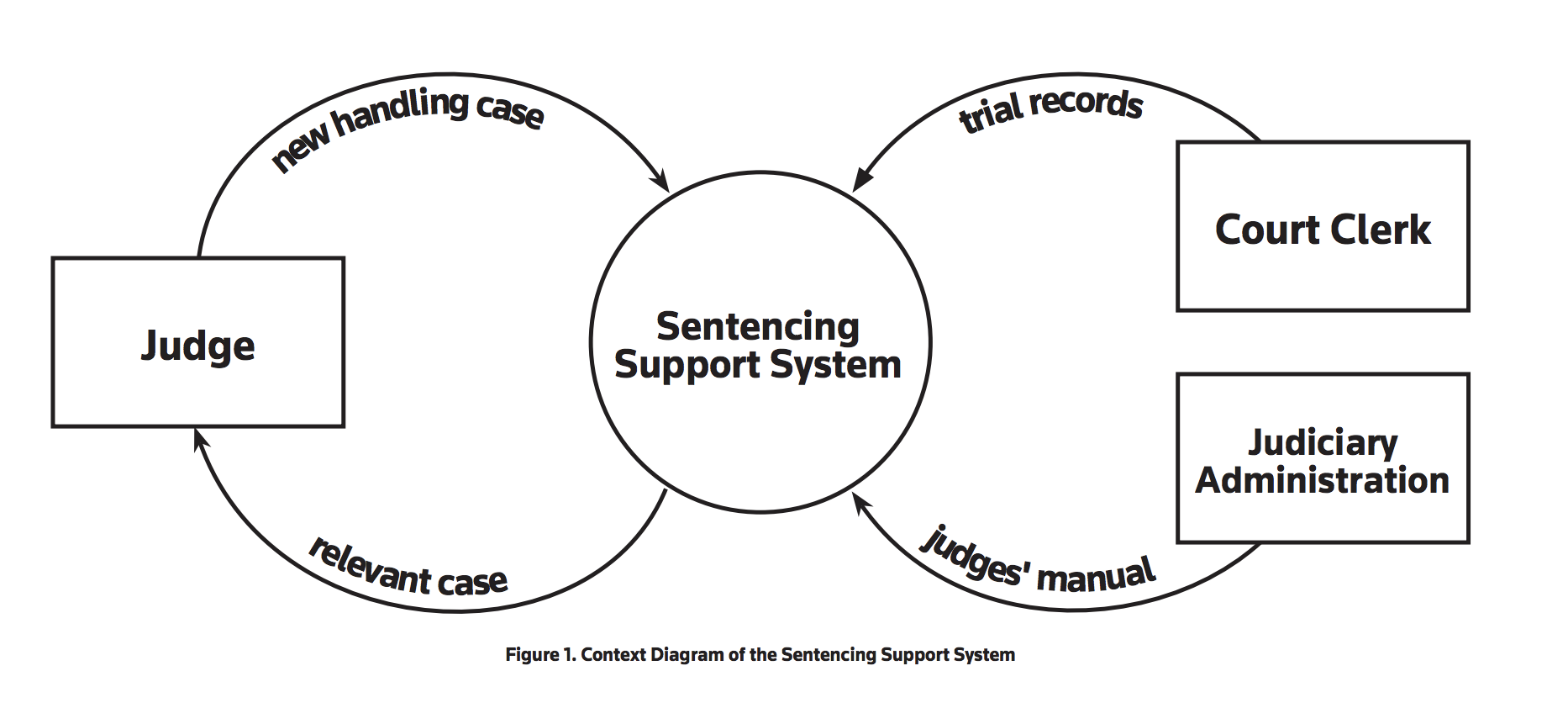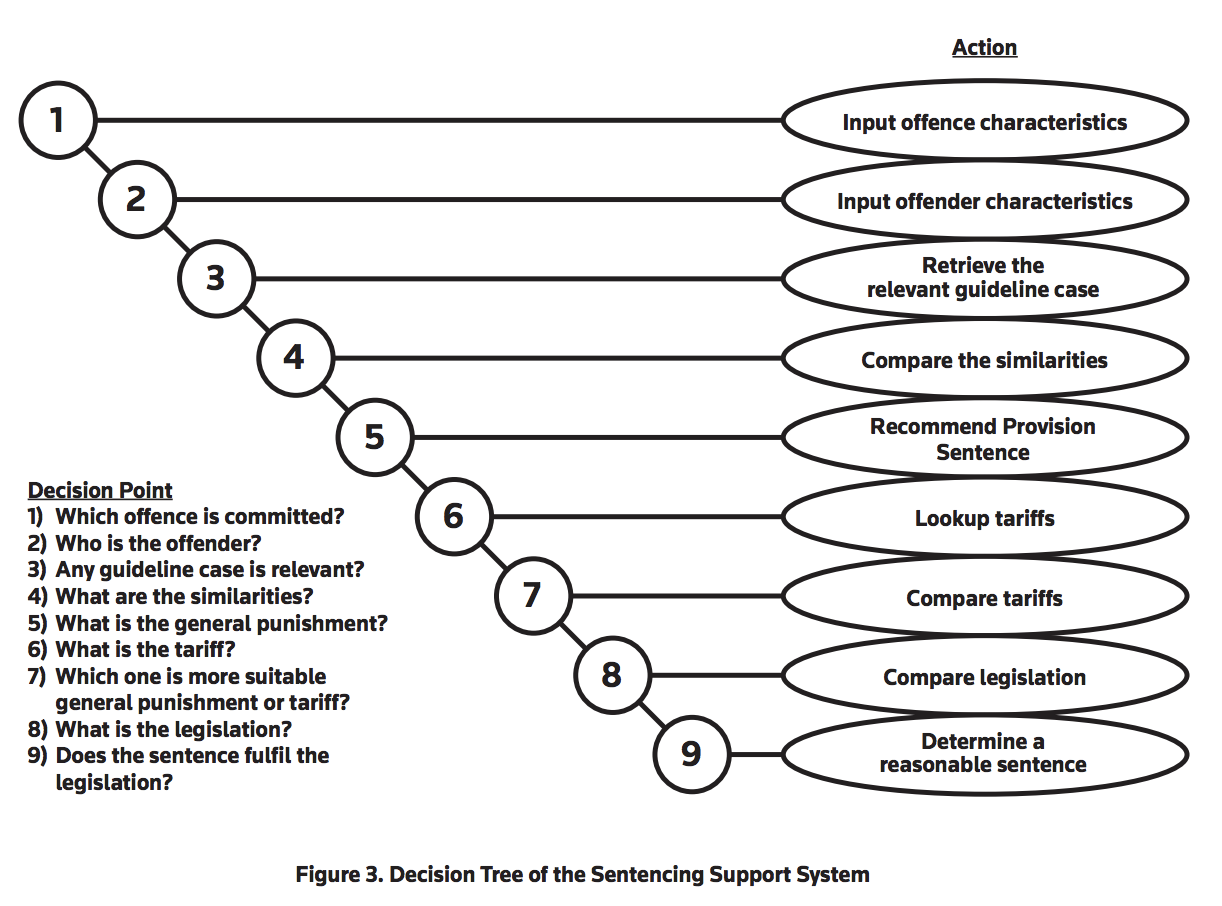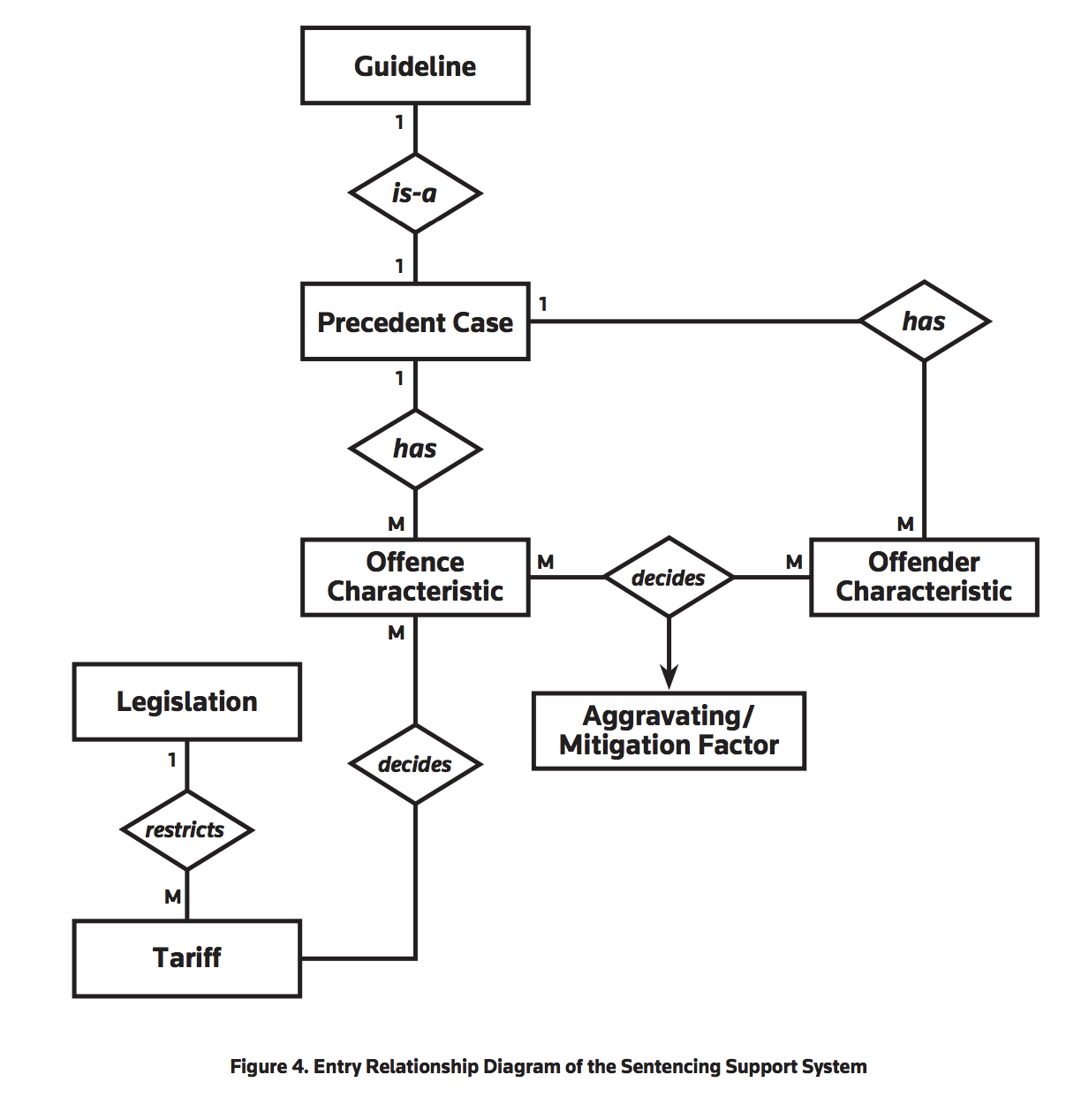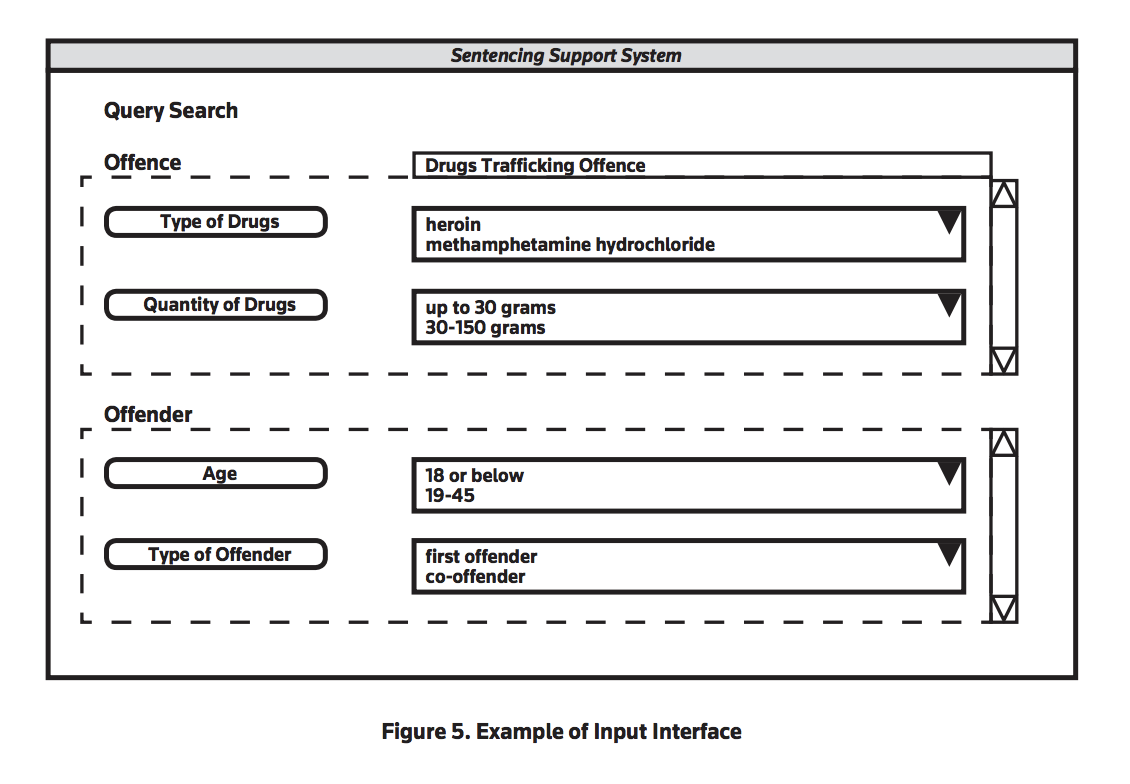Sentencing Support System | 14 Oct 2019

1 Introduction
Computers are increasingly becoming a part of the furniture of not only the modern courtroom but also the judicial functions, one of which is sentencing. Over the last 30 years, sentencing has emerged as a focus for academic research at the same time as it has become the subject of social debate. More recently, many other changes have occurred which require new ways of thinking about sentencing. This shift in thinking not only opens up a range of opportunities but also poses challenging questions about the purpose, effectiveness, and impact of Sentencing Support System (“SSS”).
One of the most notable roles of the Judiciary is to impose on the convicted persons retribution and rehabilitation with a suitable sentence. The sentence imposed has to be the most appropriate for a particular offender. Hence the concern of consistency and fairness of sentencing instigates the general public’s concern for justice and the convict’s right to know. As the general public becomes more concerned about the efficiency and effectiveness of public administration, the Judiciary is one of the prominent targets as it had been considered unfathomable to laymen. An obvious measurement of a fair judiciary may be the appropriateness of sentence imposed on offenders.
Thus, pressure mounts on judiciaries worldwide to reduce disparity and promote a reasonable consistency in sentencing. This may be the reason for a wave of sentencing process reforms. Such reforms enforce the use of sentencing guidelines, which provides a range and quantum of penalties for most of the general offences. Although introducing and enforcing the official sentencing guidelines such as the Hong Kong Magistrates Sentencing Tariff and Guidelines may fulfil these, limitations are obvious endeavours, limitations are obvious as they fail to address the immediacy of the problem and the discrepancy of interrupting the supplies of such information. Computer systems are good substitutes as they could collate all relevant data, then automate a structured process eventually enable users to understand and deal with it through a friendly interface.
2 Sentencing Support System samples
Artificial Intelligence has recently led research on advanced intelligent applications to SSS. Such intelligent systems attempt to provide solutions in a manner akin to the human. The following two examples elaborate the intelligent sentencing system in more detail.
2.1.1 Juridical Computer Advice System
Van Noortwijk et al., introduced Juridical Computer Advice System (JURICAS), which was developed by the Workshop for Computer Science and Law of the Erasmus University in the Netherlands. This system has been developed as an off-the-shelf shell application.
JURICAS is a rule-based system, which represents domain knowledge in terms of a set of rules that guide a decision in a particular situation. It consists of a control program, ‘shell’ program, and three separate files. A decision file contains all the possible combinations of questions and answers – rules and decisions, a general information file about the legal subject – knowledge, and a help file of the technical instructions of JURICAS.
2.1.2 JUDGE Program
Bain developed JUDGE to examine cognitive theories of problem solving in the United States criminal sentencing domain. JUDGE is a case-based reasoning program in which the solution to a new problem is derived from old similar problems. Bain’s work demonstrated that case-based reasoning is used by judges when formulating sentences.
Case and reasoning are the main characteristics of such case-based sentencing systems. The system works by retrieving relevant cases from a case-base to determine a sentence for a new case. Relevance of retrieved cases relies on using appropriate indices. The next step is to deal with reasoning where the system compares the similarity of the cases, features of which are in common (“on point”) to the cases and which resides in the retrieved case but not the new case or vice versa. Judges can take the retrieved case as a guideline sentence or move forward to a sentence by considering the similarities and differences.
2.2 Case-Based Retrieval and Simple Reasoning
For a decision support system to work there should be information retrieved to facilitate decision making. Such retrieval work may need an ‘intelligent’ capability to ensure the appropriateness of the retrieved information. A rule-based system is generally inadequate, as it is not capable of handling the common-sense knowledge associated in sentencing owing to the difficulty of setting rules for this type of knowledge. In fact, there is basically not any statutory rule other than a broad maximum punishment for an offence in the Hong Kong Sentencing System and that sentencing does not mean just following a set of rules.
Another consideration is a case-based reasoning system, which guides a decision by matching the similarities of cases. This characteristic match better the behaviour in sentencing. The reason for this is that judges are often expected to ‘explain’ what the convicted has done and why, what they as a sentencer expect from a sentence, and whether it is justified for the convicted to receive such a punishment. In such an explanation, judges often draw “examples” to justify the sentence, which likely consists of some previous cases similar to that offence and similar offender backgrounds.
3 System Modelling
3.1 Process and Data Flow Model
This context diagram [Figure 1.] in the structured analysis and design shows the system boundary, entities that interact with the system, and the major information flows between the entities and the system.
This context diagram contains only one process and no Data Stores. The next step is to think about the detail processes and data required. A Data Flow Diagram in structured analysis and design is used to represent the processes and Data Stores. The Data Flow Diagram is levelled; a Data Flow Process can be converted to another Data Flow Diagram at a lower level, where the processes are decomposed in more detail. In view of the miniature version of this SSS, only a first level diagram, which is at the highest level view of the system process, is illustrated below [Figure 2.].
From the Data Flow Diagram, there are shown seven Data Stores required in the system process.
3.2 Logic Model
Apart from data flow, it is also necessary to understand what processes do and how the system accomplishes the task, the logic of the process. Decision tree technique is adopted here amongst others. A decision tree is composed of nodes and actions. The nodes are decision points that are usually created by a question or a specified requirement to the system. The actions, which are normally subsequent to a decision point, are represented by ovals. A sample decision tree of SSS is illustrated as follows [Figure 3.] :
3.3 Data Relationship
The Entity Relationship Diagram is the most common technique for modelling data. The major consideration for identifying an entity is its interest for the system owner and users, who are the judges and judicial bodies. The Entity Relationship Diagram of SSS is illustrated as below [Figure 4.].
3.4 Query Formulation
A query is an initiator for a case retrieval in SSS. This query usually is a combination of search criteria input by a user. To initialise and facilitate a search for relevant cases, the user may want to enter as many search criteria as desired. Design of a checklist type entry screen is considered suitable for the system input. The following illustration [Figure 5.] resembles this entry screen.
Structured information is displayed according to the hierarchical index of a case. This entry screen allows the user to input a value for each characteristic that is listed on the entry. The data entry screen suggests what characteristic is useful in case retrieval; technique of drag-down menu is further used in enabling the user easily manipulates such structured information.
4 Using the System
Apart from those key successful factors of SSS discussed, expertise and judicial consultation, cost, and institutional authority are all relevant. Benefits and limitations of using the system are also factors in considering its feasibility. This does not only have a direct impact on judges who are the major system users, but also has implication on the social acceptance and use of the system.
4.1 Benefits
There is little doubt that the use of SSS will be beneficial to the public general. The major one is that the system provides a framework on how an offence will probably be sentenced. A channel to understand the judicial process is established with this apparent transparency of sentencing. The general public can actually see the appropriateness of sentence imposed and thus create a higher degree of trust in the judicial system.
Indeed, if a judiciary permits access of its SSS to the public general, a respondent may first obtain a “test” sentence for the offence he/she is being charged, instead of spending efforts for legal advice. Some may elect to plea guilty as a matter of convenience thereby resulting in a lower workload for the judiciary.
To the general legal practitioners, they will have an optimum presumption on the proceeding of their prosecution or defence within the framework of sentences provided by the system. This may also reduce the length of trial proceeding as both the parties are supposed to share this common ground.
Apart from these indirect users, the use of SSS also provides benefits to judges. With the help of this system, judges are able to locate an appropriate sentencing range in a few seconds and manual-searching work is totally eliminated. This also enables consistency and fairness of sentences, as the system will provide a nearly uniform sentence to an offence under a particular circumstance.
4.2 limitations and adverse impact of “machine-made justice”
The first limitation may be the routinsation of sentencing. As the system uses those sentences that were imposed in preceding similar offences to determine a new sentence, this will lead to some form of machine-made justice providing a ‘standard’ sentence to a ‘standard’ offence. It will be a problem when there are not many precedents for an offence or there is a big time gap between the precedents and the new case as a result of changes in social situation e.g. deterrent sentencing in times of need.
Another limitation is on the judicial independence. Sentencing is made at a sentencer’s discretion, which involves his or her discernment, prudence, temperament in a particular situation. This is why the role of sentencer is usually played by a judge, who has solid special education, training, and experience, and the sentencing is not influenced by any other judicial or statutory bodies. However, with the use of SSS, judges may think and be influenced on their independence as there is a suggested decision apart from the judge himself – a way whereby the judges’ work is being “judged”. This can be said as only a psychological issue for judges, it may be embarrassing when a judge’s sentence is appealed on grounds that the sentence departs drastically from the recommendation of a computer system.
5 Future Developments
There are a number of other techniques, particularly Artificial Intelligence and Knowledge Management System, available for supporting various judicial decision processes including sentencing. Most of them have been studied by the researchers in different disciplines. Fuzzy retrieval and the neural network are the two more relevant ones.
5.1 Fuzzy Retrieval
Case retrieval, which was briefly introduced, has been used in case-based reasoning systems. However, case-based reasoning cannot predict a continuity of behaviour, it just simply searches for possible repetition of patterns.
Fuzzy retrieval method mimics that of human behaviour. This results in a possible modelling similar to human approach. Case retrieval still is the majority in knowledge representation; it therefore spoils the development of fuzzy retrieval. After all, when a reasoning system is fuzzy modelled to aggregate knowledge like humans do, then fuzzy retrieval could become better at supporting judicial decisions than case retrieval.
5.2 Neural Network / Machine Learning
Advantage of a neural network lies in its learning process. With the learning capability of a neural network which collates the sentencing process conducted by all the judges (not confined to individual ones) within a given judiciary, the system can self-maintain, learn and improve like a single human brain giving rise to high degree of consistency. In due course, it will be possible for such a neural network to wholly replace sentencing work. Indeed, the use of neural network is now a popular topic in the study of Artificial Intelligence and Law.




This publication is produced by Robinsons,Lawyers.It provides a summary of the legal issues, but is not intended to give specific legal advice. The situation described may not apply to your circumstances. If you require advice or have questions or comments on its subject, please speak to your usual contact to:admin@RobinsonsLawyers.com.
All references to “Robinsons, Lawyers” and “the firm” in this document mean Robinsons, Lawyers and/or its Affiliated Entities. Any reference to a ‘partner’ means a member of Robinsons, Lawyers, or a member or partner in an Affiliated Entity, or an employee or consultant with equivalent standing and qualification. The matters referred to in this document represent the experience of our lawyers. This publication is produced by Robinsons, Lawyers. It provides a summary of the legal issues, but is not intended to give specific legal advice. The situations described may not apply to your circumstances. If you require advice or have questions or comments on its subject, please speak to your usual contact at Robinsons, Lawyers.
This publication constitutes attorney advertising.





